CES 2010
Jan 5, 2010, 11:28 PM by Eric M. Zeman & Rich Brome
updated Jan 9, 2010, 10:41 PM
Hands-on in Las Vegas with the Motorola Backflip, Lenovo Lephone, Samsung TV and projector phones, Palm Pre Plus, new LG phones, Windows Mobile 6.5.3, Google Nexus One and more.
Part 1
Samsung DTV phone
At an early press preview, Samsung was showing a demo of the new mobile version of ATSC, the technology used by local TV stations to broadcast standard digital TV into homes over the air.
The demo phone is a specially-modified version of the Samsung Moment. They've taken the camera out to make room for the TV chip, and the antenna is practically bolted on. When not in use, the antenna unscrews and goes into a lanyard holder that dangles from the side like a pen on a string. This special Moment isn't intended for sale to the general public. Rather, it's a small batch of just 300 units that will be used for a closed market trail in the Washington, DC / Baltimore area this quarter. When the technology comes to market for the public, new models will be designed, with cameras and more elegant antennas.
The demo had some glitches, but it wasn't running on a full-scale live network, so it wasn't a great indicator of how it will perform in the real world. When video came up, the quality did look quite nice (the Moment's nice OLED screen certainly didn't hurt.) The technology is designed for wide-screen content (16:9 aspect ratio) so, while's it's not true HD resolution, you'll see the same wide image as you would on an HDTV; no cut-off sides.
When it eventually comes to market, it's expected that some content - such as local channels - will be free. National channels, rebroadcast by local stations, may carry a fee to view.
The technology also supports interactivity. For example, when watching American Idol on your TV phone, you could cast a vote for your favorite singer simply by touching their name on the screen. The technology also supports web links, so that touching an ad might take you to the retailer's mobile web site, for example. Samsung and Sprint plan to test interactivity in the trial.
The trial in DC / Baltimore will involve seven DC stations and one Baltimore station, plus some national channels.
One other tidbit we learned: local stations that are currently on VHF channels 6 and below won't work with mobile TV. Those frequencies are so low that it would require even larger antennas on the phones. Therefore those stations will have to partner with another station that has a license to broadcast at a higher frequency. Fortunately, most such stations already have relationships with suitable sister stations. For example, in Las Vegas, the local NBC station (channel 3) can broadcast on a sub-channel of the local Telemundo station (channel 40,) since they are owned by the same parent company.
Here's a video demo of the DTV function in action:
AT&T
AT&T had a surprising amount of news here at CES this year. Android, Palm, BREW, HTC, Samsung, LG, Pantech, Motorola... they had news all over the place.
The big news was Android smartphones coming to AT&T. They showed glimpses of Motorola and Dell Android devices, and mentioned that HTC would have one, too. The Motorola device will have Moto's Blur interface, but little else was revealed about the phones.
We expect to have hands-on with the Motorola device later today.
AT&T also announced that it will offer Palm webOS smartphones (yes, plural) this year.
AT&T will support both Android and Palm app stores, and also announced full support for Nokia's Ovi Store. AT&T is aiming to support all major app stores, with simple carrier billing and 70/30 revenue sharing for developers.
This is all great news, but not unexpected. The big surprise was AT&T's decision to adopt Qualcomm's BREW Mobile Platform. This is the same app platform Verizon has been using for its feature phones for years. It's a newer version of it, that will support new BREW apps, old BREW apps, and - importantly - be backward-compatible with the many Java apps AT&T currently offers.
Samsung, LG, and Pantech will all be offering BREW Mobile Platform phones for AT&T in the second quarter of 2010. HTC will eventually offer them as well, according to one slide. That's an interesting development, as HTC has previously focused only on smartphones running Windows Mobile and Android.
Later in the year, AT&T will offer a widget platform across all phone platforms. This is the result of AT&T's acquisition of Plusmo. Plusmo widgets are web-based apps that use XHTML, XML, CSS, and JavaScript. Look for this on AT&T phones starting in the third quarter.
Below are some key slides from AT&T presentation to developers. There are some interesting stats in there about how they're upgrading their network to handle more data.
Moto Backflip
Phone Scoop had some time to spend with the new Motorola Backflip. This is one weird — though interesting — phone. It's a clamshell with a QWERTY keyboard, but rather than have the keyboard inside the clamshell, it is on the outside. Yeah, weird, right?
The fit and finish of the Backflip is actually very good. It resembles the CLIQ, but feels better all around. More metal, less plastic, and the prototypes on hand at the event felt sold and strong.
The front has a capacitive touch screen that is identical to that of the CLIQ. It feels good. The same three buttons are on the front fascia below the screen. They have good travel and feedback.
The hinge felt very solid, it was nice and strong. Swinging the Backflip open, you'll find the full QWERTY keyboard below the screen as on any other Backflip. The keyboard is somewhere between the quality of the Droid's and the CLIQ's. The keys are made of a similar material to the Droid's, but have more travel and feedback and more definition. They don't have quite the amount of definition that is on the Motorola CLIQ, but the design of the phone does allow the keyboard to be larger than most phones. The sheer size of the keys goes a long way toward making it easy to type on.
There are a number of dedicated keys on the Backflip that take you to the search app, Internet, messaging apps and so on.
There is a 3.5mm headset jack, microSD port and the usual Android smartphone specs.
One of the coolest features is the trackpad on the back of the screen. Motorola has essentially placed a trackpad (such as those found on laptops) on the back of the screen. Since there is no D-pad, this makes for easy scrolling and on-screen navigation when the phone is held in the open position. I found it to work well, and it was responsive.
The Backflip also runs MOTOBLUR, which Motorola promises it will continue to refine. MOTOBLUR is found on the CLIQ and is Motorola's social networking software. It seemed snappier on the Backflip, but we could have been imagining things.
The Backflip runs Android 1.5, just like the CLIQ. We're under the impression that this is linked to Blur. That is, the current version of Blur may not be compatible with newer versions of Android. However Motorola did promise that Blur and the Backflip would be updated to Android 2.1 later in the year.
In all, the Backflip is a better phone than the CLIQ. It will be available by the end of the first quarter from "a North American network operator", according to Moto. We know from the AT&T presentation this morning that that operator is definitely AT&T.
Here's a video tour:
Lenovo Lephone
Lenovo today introduced its first Android phone for global markets. It's called "Lephone", which may sound French, but is actually a play on the Chinese word for "happy", and of course on the company's name.
It's a high-spec phone in some ways, such as the 3.7-inch, 400x800-pixel display and 1 GHz Snapdragon processor. It's not all top-end, though, as the camera is only 3-megapixel. Perhaps that's a compromise made to achieve the thin profile, which is indeed quite thin at 12mm. The Lephone also includes a 3.5mm audio jack.
The Lephone has a sexy and solid-feeling design. Instead of a set of buttons below the display, there's a capacitive touch area. We only noticed a home key that required two presses to activate, but supposedly it also supports gestures, like a Palm webOS phone. In fact, the home key is not usually lit, and it's invisible when dark, copying one of the more questionable design decisions of the Palm Pixi.
The Lephone runs Google's Android OS, although Lenovo reps we spoke to couldn't tell us which version of Android. The interface has been very heavily customized. Instead of the usual widget-based home screen, the Lephone's default home screen is a "communication" screen, dominated by five large icons, for contacts, phone, email, messaging, and IM. Time and weather are also shown, at the top.
From the default home screen, an icon at the bottom will take you to a more standard set of Android widget screens. Lenovo has preloaded Lephone with a handful of widgets, all of which are full-screen. The Lenovo widgets remind us of a cross between HTC TouchFlo and LG's S-Class interfaces.
The main app menu is summoned by way of a small (almost too small) button at the top-right of the screen. Unlike most Android phones which have one big scrolling list of apps, the Lephone instead displays app icons on pages that you swipe between, like on the iPhone.
Other aspects of the interface are more like standard Android, including the familiar pull-down notification panel, for example.
There's a proprietary 9-pin jack on the side, which connects to a unique clip-on keyboard accessory. The keyboard has a rather sexy split-QWERTY key layout with a d-pad in the center. It was quite roomy and perfectly nice to type on. You can leave the Lephone and keyboard attached and close it like a sideways-clamshell phone, although it's rather bulky that way. It's a shame they couldn't make the keyboard accessory thinner, or it might be worth leaving attached.
Lenovo claims they plan to bring the Lephone to markets all over the world, starting around March or April. They won't confirm which markets will be first, but China seems likely, based on hints in the presentation, plus the Chinese characters on many screens of the demo units.
In spite of the silly-sounding name, Lephone looks and feels like a quality device. We have doubts the Lephone will come to the US this year, but it's a promising start for Lenovo.
Here's a video tour of the Lephone:
Part 2
Sonim XP3.20
Phone Scoop had a few moments to spend with the Sonim XP3.20 Quest Pro. If you need the toughest phone out there, this would be the one.
The Quest Pro has an IP-67 rating. That means it withstands more dust and water exposure than pretty much any other phone out there. The trade-off, of course, is size. The Quest Pro is enormous — quite literally a brick. On a scale of 1-10, we'd rate the toughness factor at a 10. According to Sonim, this phone is completely protected from fog, salty air, sand, and dust. Hell, it's put together so tight, it protects against microscopic particles. It also withstands multiple drops from 6.5 feet to concrete. This is not a phone for your pocket. It deserves a holster.
On the physical side of things, it has large buttons, most of which can be operated with gloves on. Sonim says that the buttons are tested to withstand 850,000 activations. That means you can press each button 850,000 times and they'll still work every single time.
The feature that scores highest on the "cool" factor would be the display. It's made of Gorilla Glass. Sonim used the Quest Pro's display to hammer a nail into a block of wood. Yeah, it's that tough.
As far as other features go, it has a 2 megapixel camera, GPS and navigation apps.
The Quest Pro is not for regular everyday people, but more for those who live life mostly outside in the elements and need a phone that can put up with all the nonsense that Mother Natures could possibly throw at it.
Samsung Projector Phone
Samsung and Texas Instruments (TI) are showing off a new prototype Samsung projector phone at CES. It uses a very tiny DLP projector module from TI that allows the phone to be smaller than previous projector phones. These tiny projector modules use a bright LED as a light source. There's still a size penalty, but the overall phone is noticeably smaller than the LG eXpo with its projector module attached.
This particular Samsung model doesn't have a name or model number yet, nor has a release date or country been announced. Therefore it's not guaranteed it will actually come to market. However it is "production-ready", and did indeed look and work more like a finished product than a prototype. It had "Anycall" printed on the front, which means that if it does come to market, it will probably be for Korea first.
Like all current projector phones and "pico-projectors", you have a choice: the image can be very small, or very dim. You can project an 8x10 image from a foot or two away in average indoor lighting, but in order to project anything much larger - like the 60 inches Samsung advertises - you need to be in a relatively dark room.
When simply navigating the menus, the phone can project the same thing you see on the screen. However, going into the special "projector" menu, you can choose a few more useful modes.
Two of those modes, of course, are for playing video and running presentations. When in video mode, the phone's display shows playback controls, while the video content is projected.
Another interesting option is a "presenter" mode that uses the camera to project a live video image of what's below the phone. It's like a pocket-size version of the overhead projector your teacher might have used in grade school.
There are also a number of decidedly less useful - but very cute - projector modes. One is a kind of shadow puppet theater. It shows you how to make various shadow puppets on the screen, while projecting other shadow puppet characters to interact with.
It's not clear when Samsung will bring something like this to the US to compete with the LG eXpo, but it is clear that this technology is maturing and becoming more practical... relatively speaking, of course.
HP Glisten
Phone Scoop had a few moments to spend with the new Windows Mobile phone from HP, called the Glisten.
The Glisten resembles today's current crop of BlackBerries in that it is a monoblock device with a full QWERTY keyboard stretched across the bottom half of the phone. It's a pretty decent looking phone circa 2007, and feels pretty good in the hand. The weight and bulk aren't too much to put anyone off, and it's not going to be a problem to stuff into most jeans' pockets (though a briefcase is the more likely home for the Glisten). Some might call it a little chubby, though. Many other smartphones — such as the HTC Imagio — are thinner.
The navigation controls are placed below the screen and are easily found with your thumb. The send/end keys and home/OK keys felt pretty good and had a decent click to them. I liked the d-pad which is circular (bigger than a dime, but smaller than a nickel). The action of the d-pad was just right.
The QWERTY keyboard has a good feel to it. I thought the keys had just enough definition to make them easy to find, but not so much that they felt pointy. The travel and feedback was acceptable, though we've definitely typed on better keyboards.
The display was a little bit of a disappointment. It measures 240 x 320 pixels, which is the bare minimum for a device such as this. Unfortunately for the Glisten, the display simply doesn't measure up to what the competition is offering.
In all, the Glisten is one of the best efforts we've seen from HP, but it is still sadly lacking when held up to similar devices from Samsung, HTC and others. The Glisten will work on AT&T's network, but I'd be surprised if anyone voluntarily buys this device. It's more for road warriors than for prosumers or consumers.
Palm webOS
Palm announced a handful of news features for its webOS platform here at CES, at well as refreshed versions of its Pre and Pixi phones, which will be exclusive to Verizon Wireless.
The Pixi Plus adds WiFi, but is otherwise identical to the Pixi for Sprint. Like the Sprint version, there are a number of fancy back covers available.
The Pre Plus sports a slightly improved keyboard, double the storage memory (16 GB instead of 8) and a faster processor more memory for running apps (RAM).* It also does away with the home button in favor of a usually-invisible touch key below the screen, just like the Pixi. This unfortunate decision makes the Pre Plus look less distinctive, and is more difficult to figure out and use, in our opinion. The upgraded features and specs are certainly welcome, however. Even better, the Pre Plus will include the Touchstone magnetic dock with wireless charging.
* updated January 14, 2010.
The new "Plus" phones will ship on January 25 with support for video capture, which will be available later for other webOS phones via software update. Video capture is being demoed here at CES in HVGA resolution, but VGA resolution should be supported by the time the phones ship. There's a built-in video editor to trim long videos down to shorter clips.
Palm is also planning to release Flash support for the web browser "soon". Palm was coy about whether Flash video would be supported initially, but they indicated that if it isn't, Flash video is something they're working on. The Flash support will be made available via a browser plug-in downloadable to any webOS phone via the app store.
Palm also launched 3G gaming for the webOS platform today. About seven games are available immediately, including the "Need for Speed" racing game from EA Mobile. The 3D gaming demo we saw looked smooth and impressive. All current webOS phones already support 3D gaming, so what's new is simply the first apps to take advantage of it.
Here's a demo of 3D gaming and video capture:
Part 3
LG
LG and Sprint announced two new CDMA phones here at CES: the Lotus Elite and Rumor Touch. They also announced an Android phone, the GT540.
The GT540 isn't intended for the US, at least not yet, but it's interesting nonetheless, as a glimpse of how LG applies its interface ideas to Android.
The GT540 isn't a very high-end device, it's very lightweight, which lends it a slight cheap feel. It's sleek and stylish, though, with a unique shape and nifty pattern on the back that changes in the light. You can tell this isn't a very high-end phone from the resistive touch screen and 3-megapixel camera. It does have wi-fi, though.
On the interface side, LG has expanded the number of Android home screens to seven, and put four icons across the bottom. Three are shortcuts to common things like phone and contacts. The fourth brings up the app menu. Otherwise the UI is very much stock Android.
The camera app is one area LG has put a lot of effort, and it's very welcome. The app has a great interface with handy buttons down the side of the viewfinder, and a pretty rotating dial interface for the more advanced settings. One of the more advanced features of the camera is face recognition.
Here's a video tour of the GT540:
LG Lotus Elite
The Lotus Elite takes the popular Lotus design and adds a relatively huge touch screen on the outside. In fact, both the inner and outer screens are 2.4-inches and QVGA resolution. Only the outer one is touch, though (and it's resistive.)
The other features of the Lotus are very similar. The keyboard is slightly larger and there are some new shortcut keys, but the touch screen is the only real upgrade. Sprint's OneClick interface carries over, which is nice.
In terms of quality, it feels nice. It's very solid and the keys are all easy to feel and press. The keyboard and touch screen both work well.
The touch screen has a rotating cube interface, where you swipe left and right to switch between various screens like contacts, messages, speed dial, photos and videos. From the center "home" screen, there's an option at the bottom to access the screens from a list-style menu, and you can also turn off ones you don't use, so you can get to others faster.
One quirk of the Lotus Elite's design is that the camera is built into the hinge and rotates with the top half of the phone. With the phone open, the camera faces you, so to take a photo of something else, the phone needs to be closed, using the touch screen to control the camera.
The Lotus Elite goes on sale January 10.
Here's a video tour of the Lotus Elite:
LG Rumor Touch
The big upgrade with the Rumor Touch, naturally, is a large touch-screen. It replaces the smaller screen and numeric keypad of the Rumor 2. It's a resistive screen, and that's apparent. It was a little finicky in our brief time with it. Still, such a large screen on a device like this is quite nice.
The keyboard is better than ever. Many higher-end phones here at CES don't have keyboards nearly as enjoyable to use. Other keys feel good, and the overall build quality is good. It is a bit lightweight and plastic-feeling, so it feels a tad cheap, but that's purely an aesthetic issue.
The main menu of the Rumor Touch is a lot like the Instinct series. It's just one big list that's completely customizable to be your own personal main menu. From there you can reach the standard phone main menu.
One unique feature added by LG is the "Hello" screen. This unique screen offers four pages where you can arrange little photo thumbnails of your favorite contacts. You can put all of your family on one screen, then swipe down to a screen of friends' faces, then put work contacts on a third screen. Within each screen, you arrange people however you like, down to the pixel, so you could arrange your family in a family tree, for example.
In terms of other specs, the Rumor does add EVDO 3G data, a very welcome addition to the Rumor series. Remaining specs and features are largely unchanged.
Look for the Rumor Touch later this quarter.
Here's a video tour of the Rumor Touch:
Clearwire
Phone Scoop had the opportunity to sit down with Clear today, operator of the Clearwire WiMax network. We mostly talked future strategy and the direction of the mobile broadband market and some interesting points arose.
First, Clear says it is on track to cover 120 million points of presence by the end of 2010. It already covers some 30 million people in 27 markets across the U.S. New York City, Boston, Houston and other large markets are scheduled to go live later this year.
For the time being, Clear believes that embedded laptops, laptop dongles and MIDs will be the primary WiMax devices available throughout 2010. It said that it doesn't expect a WiMax-equipped smartphone to launch until the end of 2010, with deeper adoption of WiMax smartphones coming in 2011. Clear wouldn't say which smartphone platforms nor hardware vendors it is speaking to to make that a reality. When asked what voice technology would be used on a WiMax smartphone, Clear indicated that it will rely on VoIP applications and also fallback on Sprint's existing CDMA network.
Perhaps the motst interesting point to come up in our discussion was that without the most recent round of funding that Clear obtained, the company might have had a much shorter future. Clear's partners held back from making their own investments in WiMax technology, equipment and services until they were sure that Clear had the capital to continue operations. Now that Clear has secured the capital, more companies will begin to make and sell WiMax devices.
A few other nuggets worth mentioning are that Clear only has hundreds of thousands of customers so far. Granted, with its limited footprint, it is unrealistic that it would have tens of millions of subscribers already, but to have only hundreds of thousands seems a bit low to me.
Even so, Clear thinks that its time-to-market gives it a leg up on the competition — notably Verizon and AT&T — which won't have LTE networks up and running for quite some time.
Brooke Shields
During CES, Phone Scoop had the rare opportunity to interview celebrity Brooke Shields. What was she doing at the Consumer Electronics Show? She was there to support LG mobile phones, of course. Here's what she had to say about the iPhone, the LG Lotus Elite and the LG Rumor Touch.
PhoneScoop: What phone do you primarily use?
Brooke Shields: Right now I have an iPhone, but I have had more dropped calls than I've ever had in my life, so I am hoping that LG and Sprint will save me from that. When I am on the road I need to talk to my kids, and time is always of the essence.
PS: Why did you get an iPhone?
Brooke: First I got it because it was cool. I felt comfortable with the touch screen. The email was great. Texting was great. I was so happy that I could film my kids and take pictures of them and share them with my husband, The phone was a big problem, though. My time is limited, and when I have a few moments to call my kids, I don't want the call to drop. That's what happened with the iPhone.
PS: What is your favorite feature of the LG Lotus Elite?
Brooke: You mean besides the fact that I can take my own picture? (laughs). I like that it closes and I like how compact it is. It feels good, I like the way that it feels in my hand. I can put in it my purse or pocket and not redial someone. That's important to save from some embarrassment. The fact that I can close it and know that I am safe is big for my relationship and my friends.
I also love that it doesn't drop calls. Sprint has been really good about that.
You've also got music, the camera is great and the video is amazing. I love that I can video my kids at soccer and ballet.
I am also technologically challenged. I still like paper, so I need things to be easy and I still want to be cool. I want to look like a cool mom.
PS: What is your favorite app?
Brooke: I don't use Facebook or Twitter. I already feel like there's too much public access to my life, and I feel like people don't need another avenue into my personal life. But I text a lot. The keyboard of the Lotus Elite makes that easy. I really like the way the keyboard feels. If someone doesn't answer their phone fast enough, I'll text.
PS: What is your favorite feature of the LG Rumor Touch?
Brooke:I am excited about the Rumor, which has a touch screen. The numbers are nice and big. I love the keyboard and I love the touch screen. Because I am in a place where I'm learning new technology, it's nice to have both the keyboard and touchscreen. It is a nice segue way. I feel like I need both. LG has bridged that gap for me. They've made it stylish, and sexy and you still have good functionality. They've made it accessible to someone like a mom.
Part 4
WinMo 6.5.3
Phone Scoop was able to find a single device running Microsoft's Windows Mobile 6.5.3. This update to Windows Mobile brings marked changes to the user interface that really allow users to forego using a stylus and rely on a finger alone.
The most significant change is the new bubble menus visible at the bottom of the screen. They replace some of the functions that were previously placed at the top of the home screen. These new bubble buttons are much easier to reach with your thumb when holding the device in one hand. This means you won't strain yourself reaching way up to the top of the screen.
The status bar at the top has also seen a nice revision. Looking at the home screen, you might think that the icons are way too small for you to accurately select with your finger. Well, Microsoft has created a drop-down dock that enlarges all the status icons and lets you interact with them. Simply swipe from the top of the screen down and the dock will appear. In the dock are some simply controls such as those for the alarm, power management, and so on. Nice. This dock is available from within any application and not just the home screen. It lets you make adjustments on the fly without leaving the particular application that you might be using.
Microsoft has also made some nice changes to the software QWERTY keyboard. When viewing the keyboard, if you want to access other characters such as number or symbols, simply swipe the keyboard to the right. Want to see a standard 12-key T9-style keyboard? Swipe to the left. This makes access alternate characters very easy. Me likey.
A Microsoft employee said that the update is being prepared for release some time later this year.
To get a better idea of how it works and looks, check out our hands-on video:
Nexus One
Earlier this week, Google introduced the Nexus One, a new Android device made by HTC. A glance at the spec sheet tells you it should be a winner. Huge high-def touch display, 1GHz SnapDragon processor, 5 megapixel camera, and so on. Do all those ingredients add up to a winning formula?
Well, that depends on who you're talking to. Rich isn't a fan. Rich thinks the hardware is mostly good, but finds fault with many small aspects of stock Android. Things that bug Rich include wonky touch keys below the display, a finicky touch screen overall, bugs like the frequent inability to easily add phone numbers from recent calls to existing contacts. A lot of little features are missing, too, like voice memo, notepad, to-do list, etc. It's no deal-breaker, but it just seems silly to leave out such simple features. However, these are things that annoyed Rich about the Droid, too, and a lot of people seem to like that phone.
Eric thinks the phone is pretty darned good. It feels great in the hand. A milled aluminum frame make the entire device rigid and strong. It is also amazingly sleek and thin, and doesn't weight much at all. As far as the hardware goes, it's a winner in the Android segment.
On close inspection, there are only a few things that differ on the Nexus One when compared to other Android devices such as the Droid.
For example, on the home screen, instead of sliding up the shade to reach the main menu, you press a software button. Of course, the home screen itself is the biggest difference. The home screen now supports animated wallpapers. Cool stuff, though some may find it distracting.
In order to get a better idea of what we're talking about, here's a video:
LG Wine II
LG - intentionally or otherwise - was showing off an unannounced phone in their booth at CES. The LG Wine II is a successor the Wine for US Cellular.
Like the original, the Wine II is a phone for older users that tries to avoid looking like a phone for older users. Whereas the Pantech Breeze and Samsung Knack might look a bit clunky to some, the Wine phones are thin and stylish; grown-up phones rather than granny phones.
What makes the Wine II great for older users are the large keys, large main display, large outer display, and large text throughout the interface. There are other thoughtful tweaks for older users, such as the ability to control the duration of vibrating alerts.
The keypad is not only huge, but works very well. All of the keys have a great feel and click action, with the possible exception of the volume rocker on the side, which seemed small and tricky to operate by feel. The displays are huge, and every last bit of text is huge and easy to read. The status icons at the top could be bigger, but the important things are easy to see. The default "grid" mode for the main menu is not as intuitive and easy to read as it should be, but that's easily fixed by switching to the excellent "list" mode.
The overall body and design are not quite as classy and stylish as the original Wine. The new model looks nice enough and feels well-built, but the design is more generic, and a slightly loose, mushy hinge doesn't inspire confidence. The row of four shortcut keys has moved from below the display to the keypad proper, making them much easier to reach and use.
The Wine II also adds a host of features that the original lacked. There's now EVDO high-speed 3G data, memory card slot, music player and FM radio. The camera resolution has also been bumped up to 2-megapixel. The camera interface is much better than we expected, with a handy, intuitive toolbar displayed across the bottom of the viewfinder.
The Wine II looks like a promising phone for anyone who wants an easy-to-see phone experience without sacrificing features. As it's technically still unannounced, we don't have details like pricing nor release date.
Live Photos
Check here for live photos, published here first.
Comments
Rich and the Android Software
That's it?
Brooke Shields...
(continues)
Palm Pre and Pixi Plus
1) What will be the release version of webOS for Verizon Wireless?
2) Will virtual keyboards (portrait and landscape) be included with the Pre and Pixi Plus (despite the webOS version when released)?
2. There was no mention of a virtual keyboard but you can always jailbreak and install the home brew version.
LePhone
Sony Xperia X10


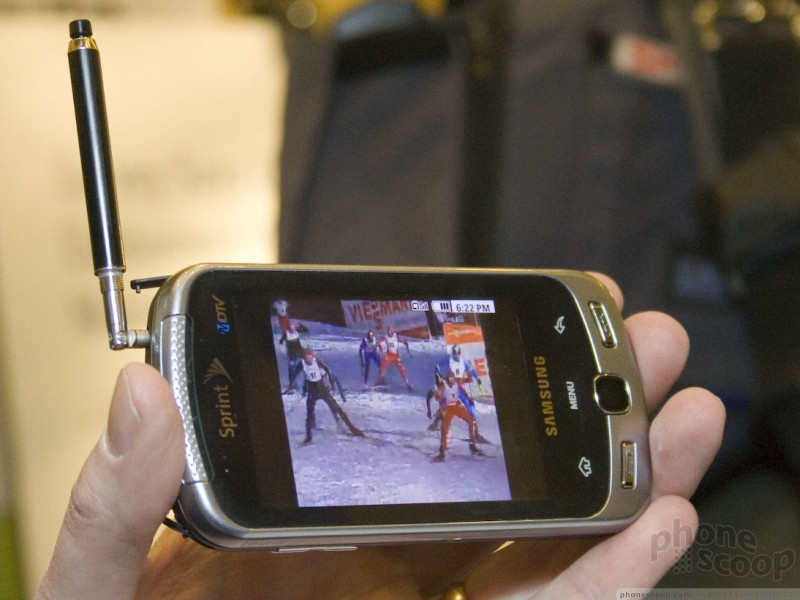







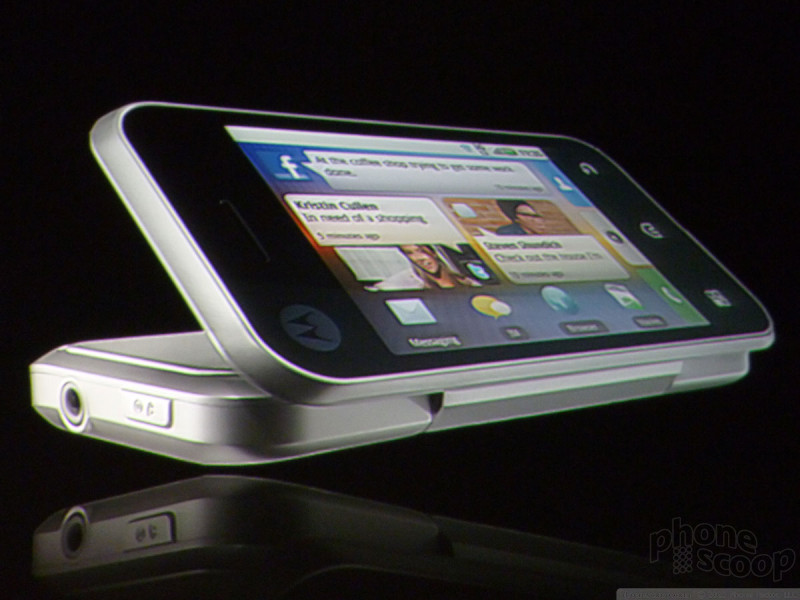




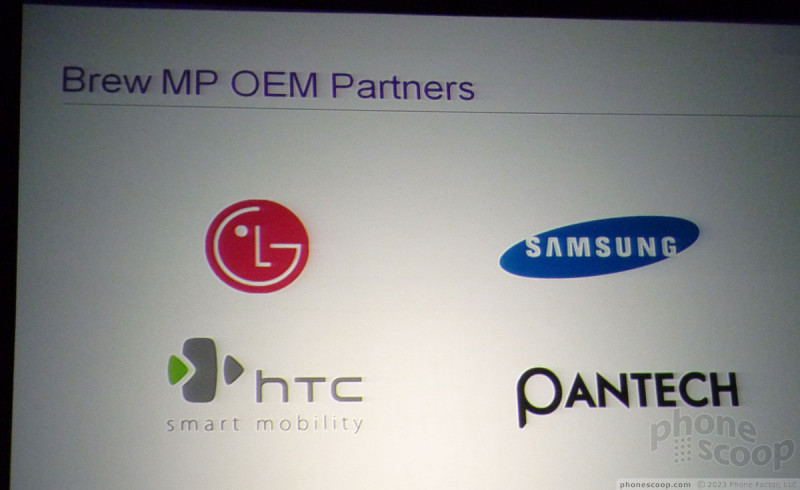










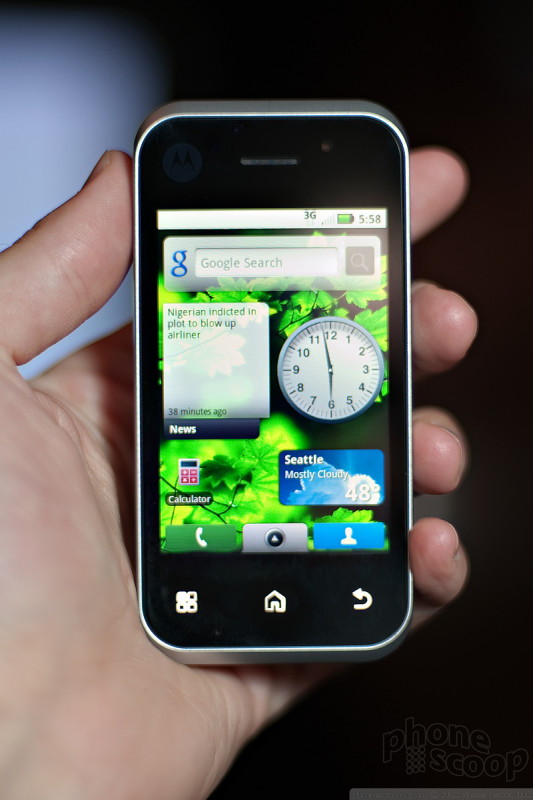























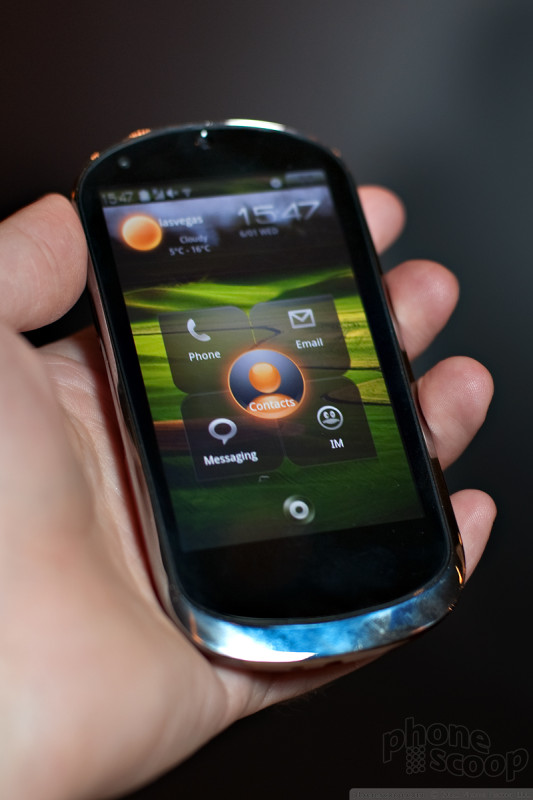
























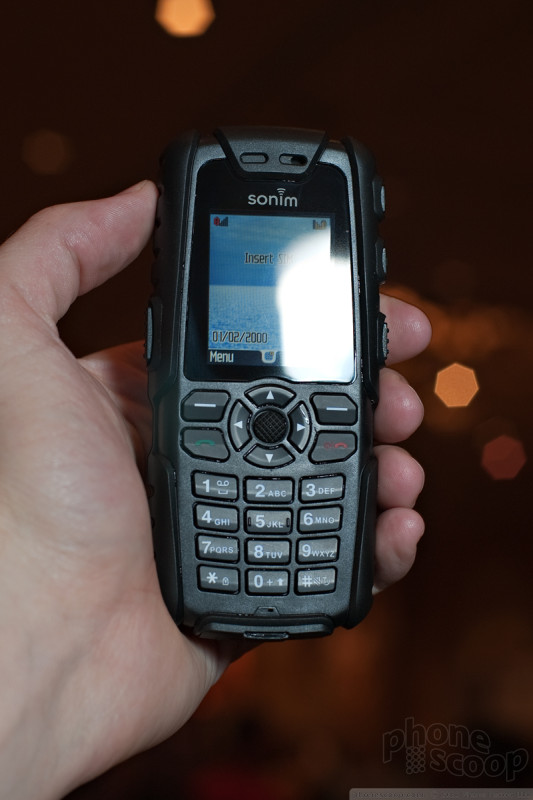











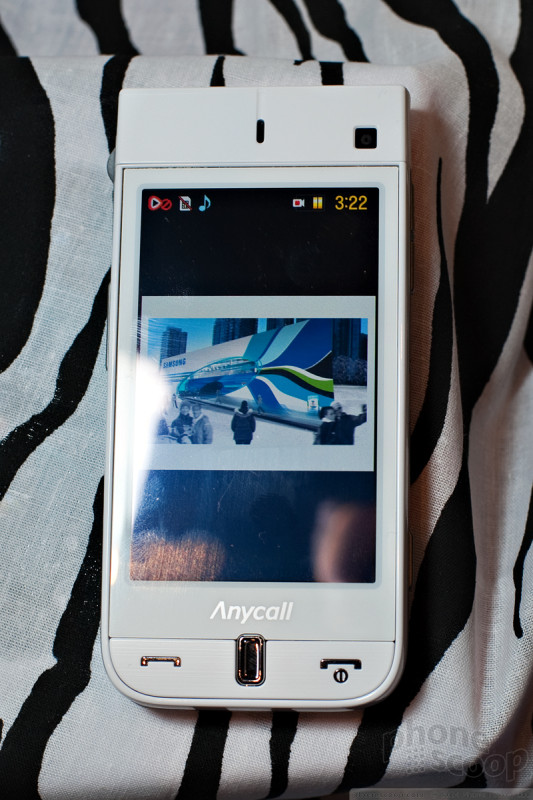












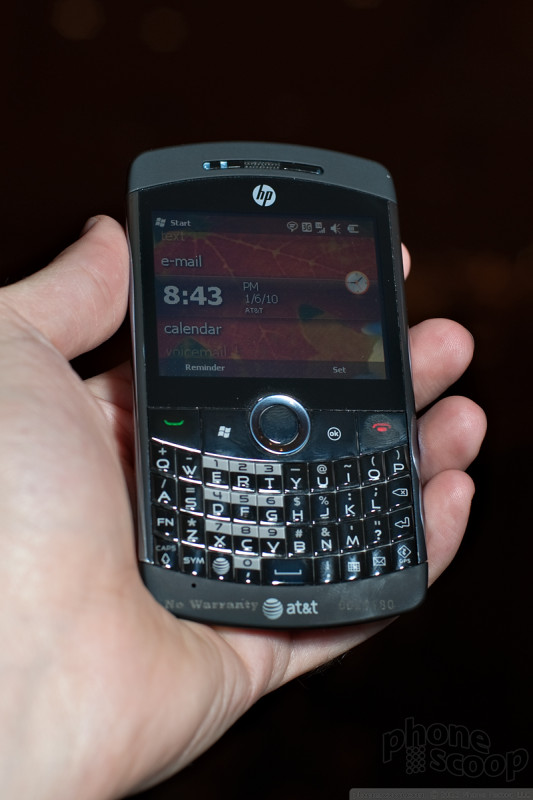









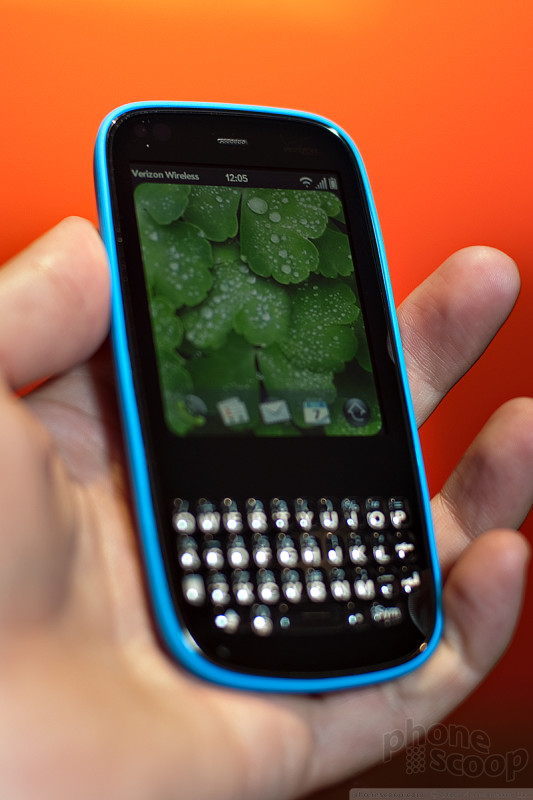











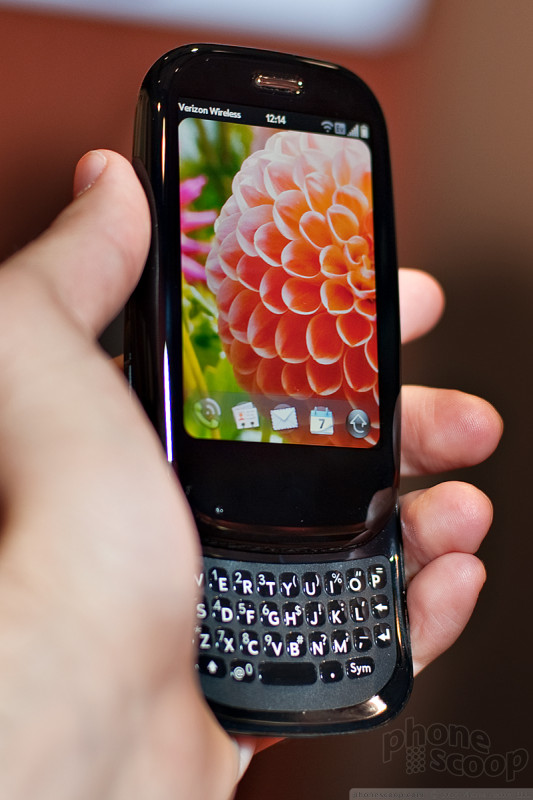





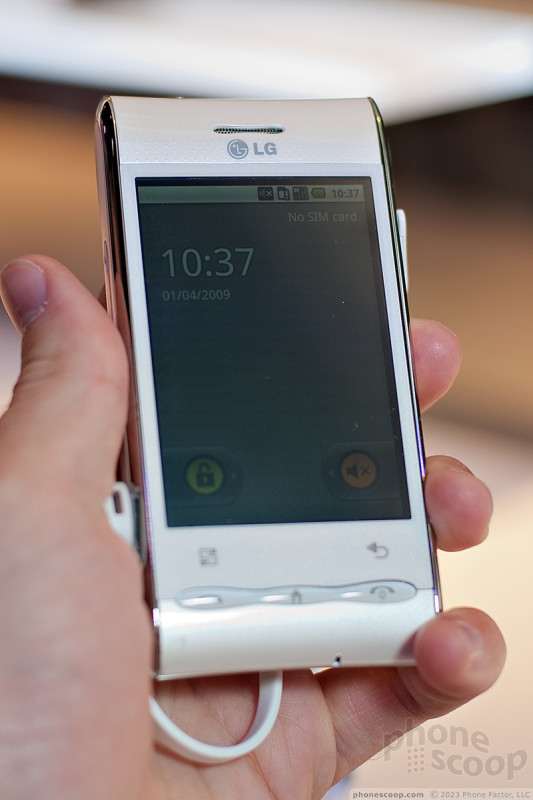


















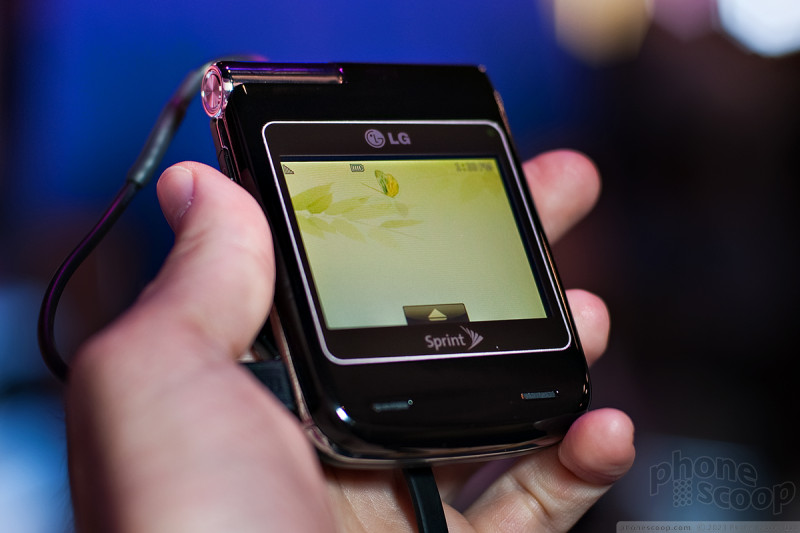













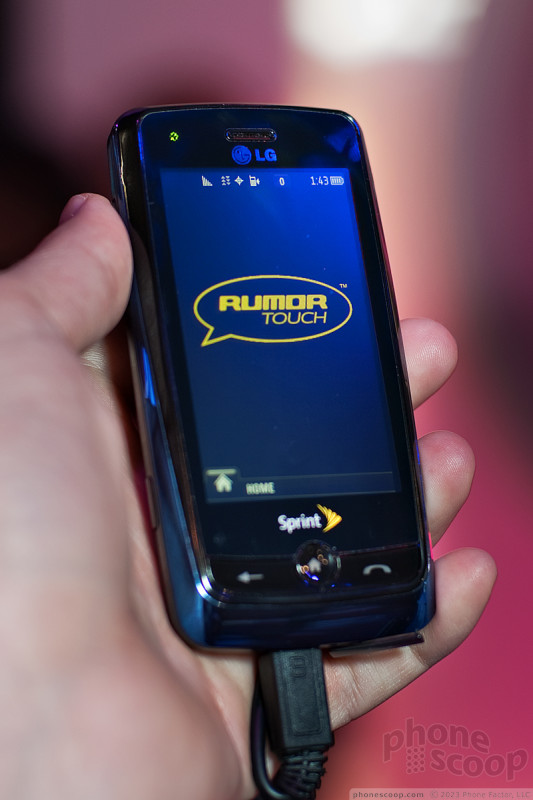




























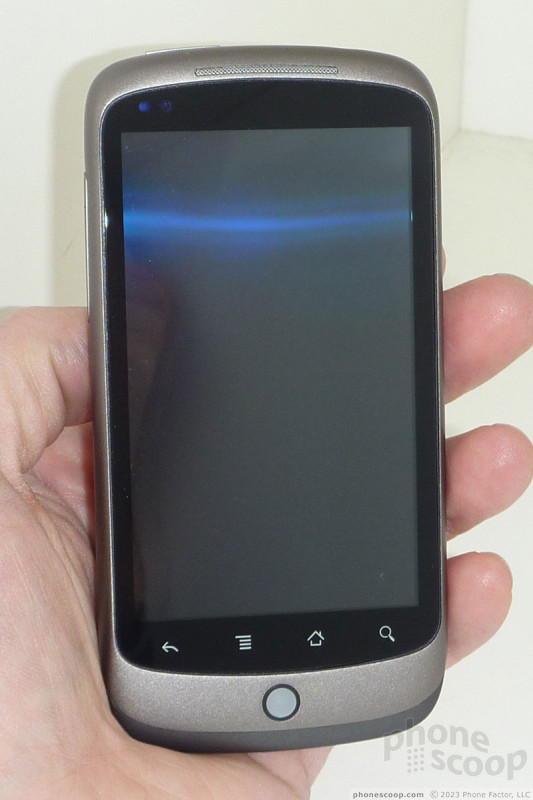



















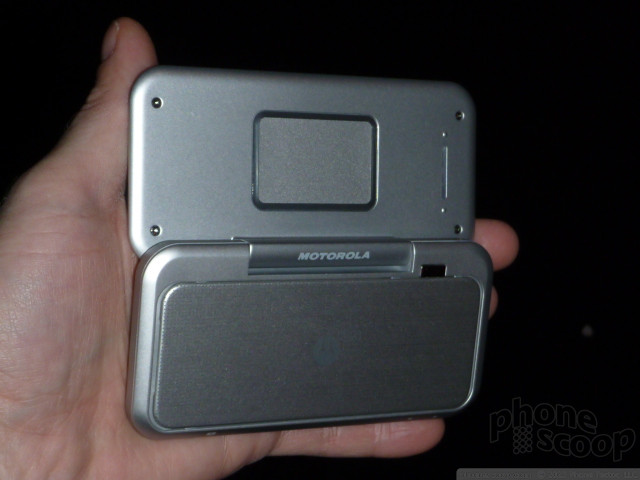











 Samsung Refreshes Galaxy S Series with S Pen, New Cameras
Samsung Refreshes Galaxy S Series with S Pen, New Cameras
 iPhone 14 Plus Offers a Big Screen For Less
iPhone 14 Plus Offers a Big Screen For Less
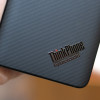 Hands On with the Lenovo ThinkPhone by Motorola
Hands On with the Lenovo ThinkPhone by Motorola
 Samsung S24 Series Adds More AI, Updates the Hardware
Samsung S24 Series Adds More AI, Updates the Hardware
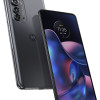 Motorola's new Edge Offers a Lot for $500
Motorola's new Edge Offers a Lot for $500
 HP iPAQ Glisten
HP iPAQ Glisten

